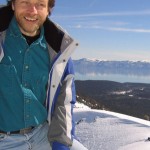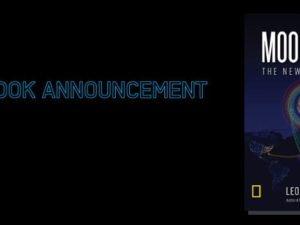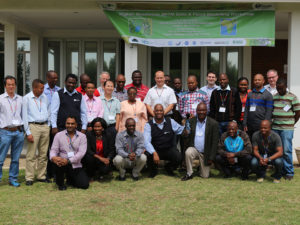
Prof. Hans-Peter Plag, PhD
Mitigation and Adaptation Research Institute
Old Dominion University Norfolk, Va.
www.mari-odu.org
LONG FEARED BY THOSE WHO STUDY GLOBAL CATASTROPHIC RISKS (GVRs), a pandemic finally devel- oped early in 2020. This pandemic is a stress test for human societies, and there is much to learn from it. It issues a clear warning that our societal risk perception is not well developed, and that societies often ignore the risk experience of the past, particularly for those risks and threats that impacted only other societies with little direct impacts that could have created a shared memory.
We could adhere to the warning issued by the pandemic and look at all GCRs more seri- ously. The pandemic also is a powerful dem- onstration. It showed us that nothing has to be as it is. Everything is open to choice. While we can strive to make evidence- and science-based decisions about how to tackle a global threat like this pandemic, we always have to make choices, and these choices are impacted by our ethics, values, and biases – and in times of stress, ethics, values and biases often collide. In the end, the choices we make determine how much resilience and sustainability – how much equality and justice – will emerge from the socio-economic systems we have built.
The choice of moving my university into cyberspace (an example of how we attempt to be resilient during stressful times and just survive until a hopefully better ‘tomorrow’) provided me with the opportunity to spend more time contemplating at home on the stress test and to have long dialogs with my wife Shelley during breakfast, lunch and dinner, and in between. She is working on risk and resilience perception and the impacts of these on risk governance. The pandemic stress test is a unique global experiment informing our research. What is written in this column is as much her work as it is mine.
Global risk experts have asked a number of “What if” questions concerning pandemics and other global threats in the past. How prepared a society is depends on community resilience, which in turn depends on individual resilience, and on our imagination to come up with the useful “What if” questions and the perception we have of the answers given to these questions.
“What can we learn from the Covid-19 stress test for all the other major threats we are facing? It makes sense to ask this question now and not delay it until the crisis is over, because the way we observe the stress test will be different with this question in mind.”
For now, suddenly, the “What if?” has become a “Now what?” question, and almost all attention is focused on this “Now what?” But there are “What if” questions that should be asked now, while the pandemic is forcing this painful stress test.
Based on Toby Ord’s recent book, “The Precipice,”1 Anthony Andrew asked in The Guardian the audacious question, “What if Covid-19 is not our biggest threat?”2 Threats all come with probabilities and it makes little sense to try to isolate and only focus on the biggest of them all. Therefore, I would like to ask the question, “What can we learn from the Covid-19 stress test for all the other major threats we are facing?” It makes sense to ask this question now and not delay it until the crisis is over, because the way we observe the stress test will be different with this question in mind.
If we think about society and economy, and if we accept that the purpose of a system is what it does,3 then we can make some very fundamental statements: the pur- pose of a society is to provide a place where the members can live and thrive in a relatively safe place. The purpose of economy is to meet our needs while safe-guarding the Earth’s life-support system on which the welfare of all of us depends. If some of us start to irreversibly misuse these systems by attaching “official” purposes that are in conflict with their de facto purposes to these systems, we all end up in trouble.
In the 18th century, the official purpose of economy was defined to be the creation of human wealth without considerations for the loss of non-human (natural) wealth, and in the early 1950s this was propagate to the generation of eternal economic growth expressed in the Gross Domestic Product. In the 1970s the official purpose was narrowed down to putting the growing wealth into the hands of a few, the shareholders. The result of this official purpose of economy, which is in direct conflict with the de facto purpose, is growing inequality, more injustice, and a rapidly degrading planetary life-support system.
The official purpose attached to the societal, social and governance systems around the world varies from country to country. In the U.S., the official purpose of society was, and still is, focused on the American dream and personal liberties, and an increasingly large subgroup sees the purpose in maintaining a power structure. In Europe after World War II, many countries saw the official purpose of society in providing safety in a just and relatively equal setting of social democratic welfare states, although in more recent times the idea of the social welfare state has been increasingly challenged. In several more totalitarian systems, the official purpose is to maintain a power structure.
The official purpose governments and people have assigned their society and their economy determines to a large extent the response to the pandemic. In societies where official and de facto purposes of society and economy are closer to each other, where societies are more equal and taking care of the people, where trust of the people in their governments and in each other is generally deeper – in most of these countries the responses appear more effective. In countries where economy and society are designed to serve the privileged few, where inequality is large and many are left behind, where access to information, data and knowledge is limited and polarized, where crime rate is high and trust is low, the responses are more ad hoc and as a result, fail to prevent widespread infections and high numbers of fatalities.

Figure 1. The excess deaths (the reported deaths minus the expected deaths based on the average over the last five years) shows for most U.S. states a large increase after the start of the pandemic, and in many states the excess deaths are more than twice as large than the deaths directly attributed to Covid-19.4
We can make difficult choices and live with them. This is what Covid-19 has shown very clearly. We even can halt large parts of the economy. We certainly could bring the official purpose of society and economy closer to the de facto purpose, which would immediately result in a change of the spectrum of possible futures, with far more desirable futures open to us, including new ones not envisioned before the stress test that could become the “new normal,” although not necessarily better normals.
And we can think about what we need to know if we want to identify emerging threats better and inform our timely responses, particularly for those “X-events” that generate previously unseen system states and require transitions to new normals. What observing system could provide the data that would allow early detection and timely warnings?
In the planetary system, including humanity, all is about flows, the flow of plastics into the humansphere and from there into the terrestrial environment and the ocean; the flow of nitrogen and phosphorous into fertilizers, the agricultural fields and into rivers, lakes and the ocean; the flow of carbon from fossil fuels into the humansphere and then into the atmosphere and from there into the ocean; the flow of energy from the sun into atmosphere and ocean; the flow of misleading information through social media; the flow of viruses and other pathogens from the environment into the humansphere and within the humansphere; and, not least, the flow of humans through birth and death – into and out of the human population.

Figure 2. In the “Data as Active Subjects” concept, the different species of the ISDAs are in a digital ecosystem, and each of them represents a data product (DP). They interact with users to provide knowledge or manage access to data. The knowledge base generates graph data based on information obtained through crowd sourcing or extracted from social and research networks and publications.5
Utilizing the death reported in several U.S. states for March and April 2020 to the Center for Disease Control and Prevention (CDC), several groups found that excess deaths during the early period of the pandemic in the U.S. were in some states more than twice as high as the reported Covid-19 deaths4 (Figure 1) and emphasized that this is indicating a significant underreporting. For me, it raises the question of why is this flow that the deaths represent not continuously monitored? Knowing excess deaths on a continuous basis with high spatial resolution would not only be important during times of pandemics, but also could help to detect in a timely manner impacts from environmental pollution and help to assess the true death toll of heat waves, droughts, hurricanes, wild fires, and other events and trends.
It seems surprising that monitoring the stocks and flows of shares in companies has been developed with a time resolution of seconds and early warnings of undesirable economic events are readily available. Monitoring the flows of humans through death out of the population has not, and early warnings are not available.
More generally, knowing and understanding the flows is fundamental for understanding risk and improving risk perception. Knowing which flows should be limited or eliminated, which should be increased or made redundant, and which are changing can change risk perception, inform risk management and help build a system with more resilience as an emerging property.
Knowing the stocks and flows, and understanding the processes that can change the flows and the processes that changing flows can trigger are conceptually very powerful ways to analyze a physiological system. This concept also can, and should, guide the conceptual development of an observation system for Earth viability.
A physiological system can be considered an ecosystem of many different species of stocks interacting with each other through flows. The observing system most adapted to this conceptual framework would be an ecosystem of agents that represent and provide information as needed about the stocks and flows in the physiological ecosystem.
In a recent publication we developed the idea of Intelligent Semantic Data Agents (ISDAs) that could facilitate the transformation for the current perception of “Data as Passive Objects” to a novel percep- tion of “Data as Active Subjects,”5 (Figure 2). In fact, pairing ISDAs with sensors on all major stocks in the planetary physiological system including the biosphere, humansphere and technosphere would provide a digital ecosystem capable of providing an enormously valuable service to humanity.
“In the end, the choices we make determine how much resilience and sustainability – how much equality and justice – will emerge from the socioeconomic systems we have built.”
Recent developments in observation technologies, the Internet of Things, crowd sourcing, communication, and information and knowledge modeling could make this possible if we make the choice to go for it. Presenting the information in a dashboard available to all of us would inform us about the viability of Earth and could guide us in our effort to ensure that the human systems we build are in compliance with the purpose of our planetary life-support system. Accepting that humans are in the driver seat of spaceship Earth, this digital ecosystem and the planetary dashboard are no longer a nice things to have – they are mandatory if humanity wants to reduce the risk not only of future pandemics but other GCRs that have the potential to end civilization. Rising from the ashes of the on-going stress test, we might want to focus on building the Earth viability dashboard.
Endnotes:
[1] Ord, T., 2020. The Precipice. Hachette Books, New York.
[2] Andrew, A., 2020. What if Covid-19 isn’t our biggest threat? The Guardian, April 26, 2020, https://www.theguardian.com/science/2020/apr/26/what-if-covid-19-isnt-our-biggest-threat.
[3] Beer, S., 1985. Diagnosing the System for Organi- zations. John Wiley & Sons, New York.
[4] Katz, J., Lu, D., Sanger-Katz, M., 2020. U.S. Coro- navirus Death Toll Is Far Higher Than Reported, C.D.C. Data Suggests. The New York Times, April 28, 2020.
[5] Plag, H.-P., Jules-Plag, S-A., 2019. A Transforma- tive Concept: From Data Being Passive Objects to Data Being Active Subjects. Data, 4(4), DOI: 10.3390/data4040135, https://www.mdpi.com/2306-5729/4/4/135.
Acknowledgement
This column would not be what it is without Shelley Jules-Plag struggling with me through sometimes daunting conversations about the risks we are facing; my neighbor Barry Clemson, who in frequent Zoom meetings introduced me to the fundamental works of Stafford Beer and works with me on informing about Earth viability; and my ODU colleague Cesar Ariel Pinto, who enriches my thoughts and provided stimulating comments on a first draft of the column. I am grateful to them. I am who I am in this stressful time because of them.


